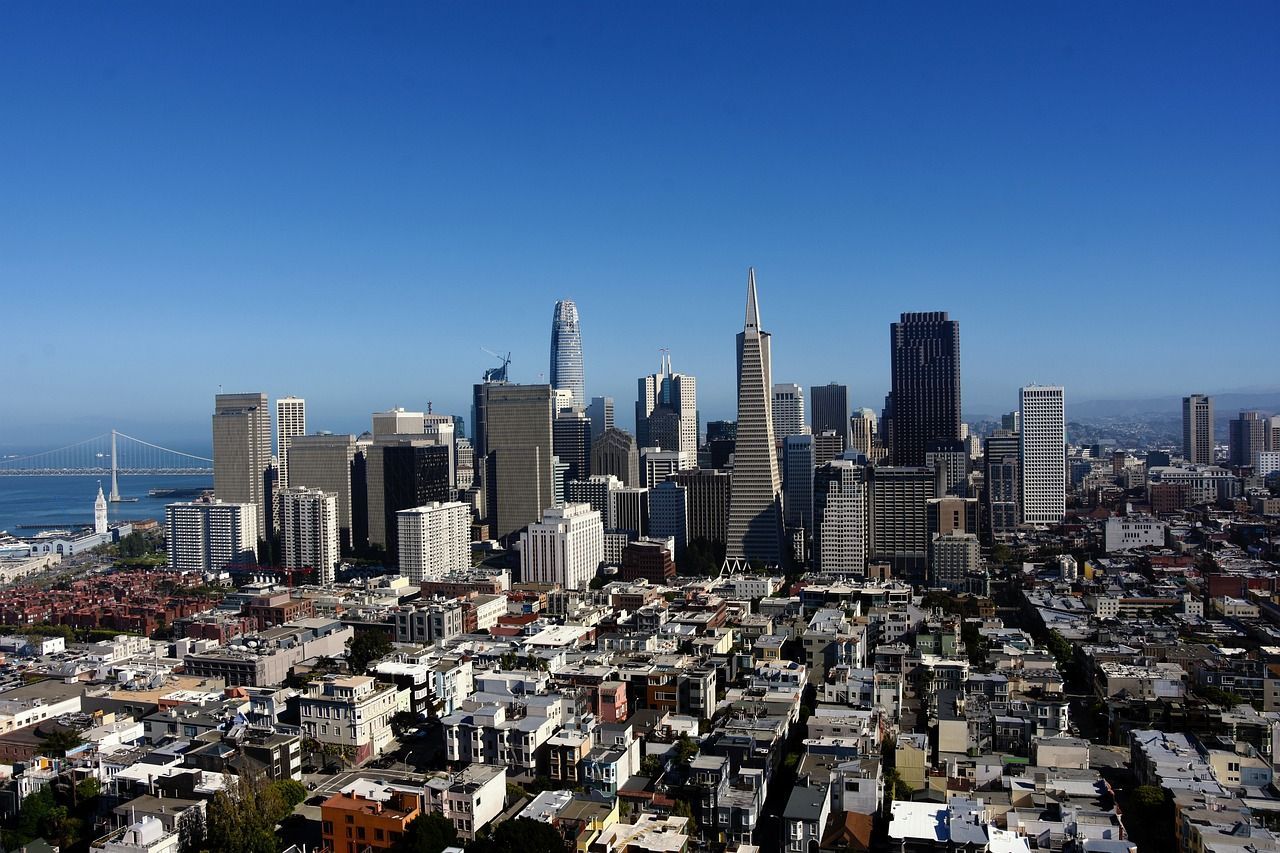Urban Growth and Trains
The impacts of rail projects for non-transit oriented land-use

There are so many aspects to urban growth, it’s impossible for an instant download into a thousand words of a blogpost that explains everything. This will be an abrupt and incomplete definition but, with some value. Part of the focus with this blogpost is to address the question: what is to be gained with the implantation of a high-speed (160mph) steel-wheel-on-rail train in California?
China’s rapid growth of GDP in the early 2000’s was based on its long term strategy of major investment into manufacturing infrastructure which began in the early 1980s. With this land-use investment strategy, China transformed; from a poverty-stricken country into the world’s leading manufacturing capital. As a communist country, its arrangement of labor force, which provided its colossal manufacturing machine; brings an interesting content for conversation, however, this blogpost is limited to the transportation components and urban growth. Suffice to say, China operates with a unique technique of government philosophic procedure. Additionally, China’s industrialized land-use is transit-oriented development. Its newest growth is intermixing automobile centric land-use.
What are the impacts to areas with varying economics?
There are good questions that have answers and bad questions that are ambiguous. This question is bad. The question has to be isolated to eliminate its ambiguity. Every region has areas of specific economic income; referred to as Gross Regional Domestic Product (GRDP).
The environmental, economic, and social effects of urban growth are intertwined and directly related to its land-use design. The primary consideration with all urban growth is an area’s type of land-use. To answer questions about any kinds of impacts, the question of its land-use type is the first step to assimilate an answer. There are four types of land-use: nature, agriculture, transit-oriented design and automobile centric land-use design. There are three types of impacts to land-use: environmental, economic, and social. Any answers about impact have to be isolated specifically to social, economic or environmental impact. Finding an area’s impact can be measured by sustainability.
Urban growth is based on an area’s transportation. Poverty and wealth remain corollaries of human nature. The financial impacts of urban growth are strategic to an area’s land-use design. Struggle and strife of the human condition are unchanged. The dream of utopia is a dream, hope is for heaven. Urban growth is related to its transportation.
The pursuit for environmentally clean transportation can only occur with efficient energy use. This is an arena beyond urban growth; specific to the transportation industry. This is an area of scientific research and require physics study into molecular designs at the subatomic level which eliminate energy loss.
Goals of sustainable urban growth
In 1987 the United Nations concluded a four year study which it named the Brundtland Report. This was an ameliorate study to identify and develop sustainable urban growth. This incredible achievement identified three components of sustainability: environmental, economic, and social. CATTCC recognizes that all urban growth is based on its primary source of transportation. This clearly indicates that to have sustainable urban growth, it must have a mechanism of sustainable transportation.
From the blogpost, Building New Land-use Designs, is the following: Inasmuch as transportation is the foundation to all urban growth, sustainability for land-use is the most important aspect for urban growth. This brings the question: how is its sustainability enabled? The political move to force society to remove plastic bags is irrelevant to sustainable urban growth. More relevant than political rhetoric, sustainable urban growth involves nature. Growing gardens, fresh water access and common-sense are among the plethora of following nature’s course.
The primary concern for urban growth is enabling sustainability. Urban growth is built on transportation, it’s imperative that efficient energy use is implemented for transportation if urban growth is to be sustainable.
This brings to question: what are the impacts of our current state of unsustainable urban growth? The blogpost Sustainable Growth for Urban Development, defines these unsustainable impacts:
Environmental Impact
The automobile requires road surfaces. These roadbeds are oil based. Ever watched a road being built? Lots of grading work, scraping dirt, filling, and generally reworking the natural surface of Earth. Okay, not a big deal in small amounts, but tens of millions of miles of roads heavily effect the natural water flow of streams and runoff. Secondly, millions of miles of roadbeds capturing grease, emissions by-products, pollutants, carcinogens, and oil spills are funneled as oil canals called roadbeds flowing directly into the water basins. That is undoubtedly environmentally unsustainable. Millions of electric and autonomous cars won’t resolve the damage caused by the oil-based road infrastructure.
Economic Impact
Ever hear the phrase “buy local, spend local?” This term is what creates regional economic sustainability. A dollar spent locally allows that dollar to stay in circulation, being continually exchanged within a local area. When that money is spent out of the local area, the money is gone; it can no longer be used locally. Automobile-centric land-use design is economically unsustainable. Here’s why: the first product of economic unsustainability is the purchase of a new automobile. Today’s purchase price of an automobile is what, on average? $50,000? That amount is instantly removed from circulation in a local economy, never to be recovered for circulation in that community unless that car was manufactured in that local community. Then there are the fuel consumption rates. Averages vary from region to region. For example, a county consumes 500,000 gallons of gasoline per day. At $3 per gallon, that is $1.5 million per day (less 2 percent for the wholesaler and retailer) permanently extracted from ever being used and circulated in that community. An even greater financial extraction from the community are insurance costs per vehicle, at an average cost of $120 per month per vehicle. This is economic unsustainability from the design of automobile-centric urban land-use.
Social Impact
These aspects are rarely considered by studies, except by a very few stragglers engaged in nontraditional academia. It’s the cutting edge of far-reaching consideration. There was a term coined in the early 2000s called visual hostility. It was popularized then, not so popular now, due to the extent of its content. Visual hostility is found to describe blight. Scores of nonprofit organizations declared war on urban blight. The support money behind nonprofits came from big money interests that cashed in on government subsidized, low cost, low-income neighborhood gentrification near high value real estate areas. A lot of blight was erased within a few years. To elected politicians, like homelessness, urban blight no longer exists.
There’s a segment of people involved in the conversation of sustainability, that have misappropriated its definition. Distorting legislative language of sustainability is a travesty. However, the unsustainability of land-use is an economic consequence of an unsustainable mode of an area’s primary mode of transportation. While there is good to be found in some legislation, there is also harm from vague, ignorant, and unjustified environmental regulations.
The misappropriated social impacts tend to reach into the political realm of emotions. The actual social impacts of urban growth are health related. One of the main concerns of social impacts are the negative effects related to traffic stress.
Societal attitudes are a product of human nature. Cultural attitudes are manifested by community voices, irrelevant to transportation based urban growth.
Unsustainable urban growth
Unsustainable urban growth will continue as long as the automobile remains the primary source of transportation in Western Society.
From the CATTCC website’s information page; Sustainable Urban Growth: Initially, the automobile was sold to the general public as a method of attaining independence. By partaking in the feeling of independence, suburbia was created and progressed into what we have today, which is uncontrollable sprawl. One of the unforeseen aspects to this claim of freedom and independence was dependency to its unsustainable design flaw and costs to its future.
Among the consequences of an automobile-centric society is the pervasiveness of social isolationism. The standard procedure for people today is to get up from bed, walk outside to their car, and drive to work with no social interactions. Many people park in a parking lot, walk to an office, work an entire day without the benefit of the interaction of close personal relationships, and then drive home, lacking any relevant social interaction. In its proposition of independence, the automobile-centric society evolved into a culture of social isolationism, or a lack of social interacting.
Unsustainability of the automobile reaches deep into an automobile-based society. The cultural implications of social isolationism and the myriads of health problems created by the stress of traffic congestion are yet to be fully investigated.
Conclusion
Addressing the initial question to the opening line of this blogpost: what is to be gained with the implantation of a high-speed (160+mph) steel-wheel-on-rail train in California?
With any transportation system, its methodology of integration is dependent upon the area’s land-use design. Just because a project has the political strength for its implementation, this has no bearing on relevance to a project’s public usefulness. In other words: a transit line implanted in an automobile centric land-use designed region; is dysfunctional transportation.
In support of the proposed CA HSR line, it does coincide with the small-downtown station locations that have small sections of transit-oriented land-use design. San Francisco, however, is the only location to effectively use the transit-oriented land-use design. The other proposed station sites have eliminated their transit-oriented land-use designs; and now embrace a dysfunctional transit land-use design with automobiles preventing fixed rail transit within those transit-oriented locations. All urban growth post 1930s is automobile centric land-use design.
So, does the 200-year-old technology of train transportation work well in today’s modern society? Today’s culture has multiple and varied destinations, people travel to separate locations. Today’s culture is dependent upon the travel independence an automobile provides. This is to say; CA’s train is a technological antique and societally unsuitable. Its cost is staggering. Its heavy weight infrastructure is necessarily wasteful. Its massive footprint is obtrusive and a visual nightmare.
For many reasons, all major transit corridors should operate in grade separate ROWs (Rights-of-Ways), specifically: tunnels.
Photo credits: Freepik, Pexels



